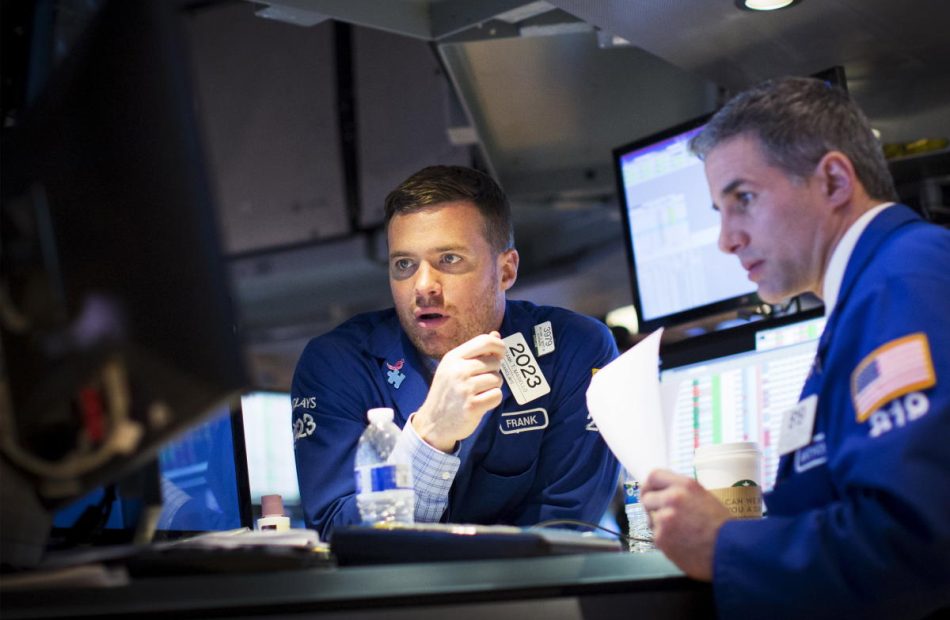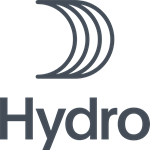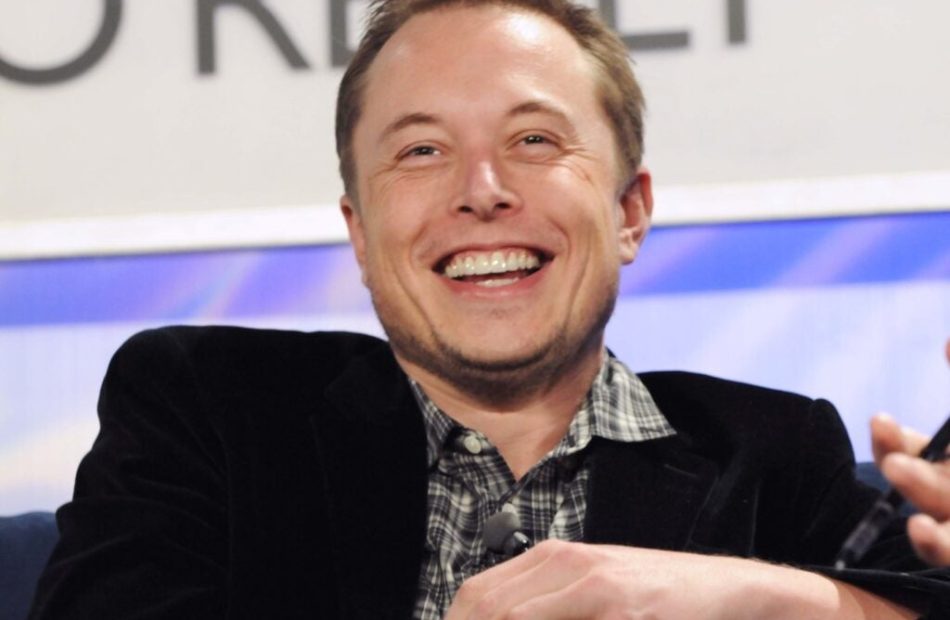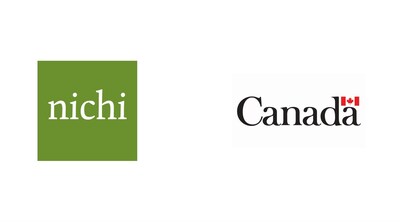I'm 62 With $1.6 Million in an IRA and a $2,800 per Month Social Security. What's My Retirement Budget?
A budget by definition includes both income and expenses. The two halves of a budget are interdependent, so that if expenses go up, income must also rise. Otherwise, the budget won’t balance. Someone ready to retire at 62 with $1.6 million in an IRA and $2,800 in monthly Social Security benefits could start with an income estimate of approximately $97,600, based on a popular retirement fund withdrawal rate. This would be enough to fund a comfortable retirement in many cases, based on surveys of retiree spending. If individual lifestyle choices or other needs call for more income, various strategies might be able to provide it. If you’re modeling various retirement financial scenarios, consider talking it over with a financial advisor.
One common rule of thumb suggests withdrawing 4% of the principal from a retirement account in the first year of retirement, adjusting that amount annually by the rate of inflation. For a $1.6 million IRA, that figure would be $64,000 in the first year. The next year, assuming a 2% inflation rate, the withdrawal would be $65,280 and so on. Barring the unexpected, a retiree with a conservatively invested portfolio could continue doing that for 30 years with little chance of exhausting their savings.
A $2,800 monthly Social Security benefit is equivalent to $33,600 annually. Along with the $64,000 IRA withdrawal, a retiree in this situation could likely expect a total of $97,600 the first year of retirement. Social Security is also adjusted for cost of living, so the retiree’s income, which comes to $8,133.33 monthly, would likely stay approximately the same in terms of purchasing power. Still, you’ll have to make sure this covers your expenses — including taxes.
There are a few different methods of estimating expenses in retirement. One is to estimate expenses as a percentage of retiree earnings the last year of working. The percentage used ranges from 55% to 90%, with lower-income retirees typically employing a higher percentage. A figure of 70% is one of the more widely used. Average salary for someone 55-64 in 2023 was $63,544, according to the Bureau of Labor Statistics. For an average 62-year-old retiree, then, using this approach suggests annual expenses of $63,544 times 70% or $44,480.80, well below the estimated annual retirement income of $97,600.
Another way to estimate expenses is to look at what retirees actually spend. According to surveys, median retiree budgets range from about $24,000 annually to about $34,000 annually. Average retiree budgets are significantly higher, most likely because averages can be skewed by a smaller number of bigger spenders. However, examinations of actual retiree spending again suggest that $97,600 annually could readily fund a comfortable retirement.
Harley-Davidson Gears Up For Q3 Print; Here Are The Recent Forecast Changes From Wall Street's Most Accurate Analysts
Harley-Davidson, Inc. HOG will release earnings results for its third quarter, before the opening bell on Thursday, Oct. 24.
Analysts expect the Milwaukee, Wisconsin-based company to report quarterly earnings at 79 cents per share, compared to $1.38 per share in the year-ago period. Harley-Davidson projects to report revenue of $965.78 million for the quarter, compared to $1.3 billion a year earlier, according to data from Benzinga Pro.
On Sept. 4, the company’s board approved a cash dividend of 17.25 cents per share for the third quarter.
Harley-Davidson shares fell 1.2% to close at $34.13 on Wednesday.
Benzinga readers can access the latest analyst ratings on the Analyst Stock Ratings page. Readers can sort by stock ticker, company name, analyst firm, rating change or other variables.
Let’s have a look at how Benzinga’s most-accurate analysts have rated the company in the recent period.
- B of A Securities analyst Robert Ohmes maintained a Buy rating and cut the price target from $50 to $45 on Oct. 15. This analyst has an accuracy rate of 77%.
- Baird analyst Craig Kennison downgraded the stock from Outperform to Neutral and slashed the price target from $44 to $40 on Oct. 2. This analyst has an accuracy rate of 66%.
- Citigroup analyst James Hardiman maintained a Neutral rating and raised the price target from $37 to $39 on Sept. 19. This analyst has an accuracy rate of 68%.
- UBS analyst Robin Farley maintained a Neutral rating and raised the price target from $39 to $40 on Aug. 23. This analyst has an accuracy rate of 82%.
- Morgan Stanley analyst Adam Jonas maintained an Overweight rating and raised the price target from $50 to $51 on April 26. This analyst has an accuracy rate of 60%.
Considering buying HOG stock? Here’s what analysts think:
Read This Next:
Market News and Data brought to you by Benzinga APIs
© 2024 Benzinga.com. Benzinga does not provide investment advice. All rights reserved.
Stock market today: Nasdaq, S&P 500 sink as tech leads losses ahead of Tesla earnings
Sales of existing homes fell in September as house hunters remained on the fence about buying a home despite mortgage rates easing during the month.
Existing home sales slipped 1.0% from August’s tally to a seasonally adjusted annual rate of 3.84 million, the National Association of Realtors said Wednesday. That marked the lowest rate since October 2010. Economists polled by Bloomberg expected a pace of 3.88 million in September.
On a yearly basis, sales of previously owned homes were 3.5% lower in September. The median home price rose 3.0% from last September to $404,500, marking the 15th consecutive month of annual price increases.
“Home sales have been essentially stuck at around a 4 million-unit pace for the past 12 months,” NAR chief economist Lawrence Yun said in a press release.
There have been significant challenges that have weighed on sales activity, including a lack of inventory, escalating prices, and elevated mortgage rates. Last month, however, those factors turned around.
The Federal Reserve cut its benchmark rate by half a percentage point in September. While the central bank doesn’t set mortgage rates, its actions influence their direction of movement.
Mortgage rates hit the lowest level since February 2023 ahead of the Fed decision to ease, while listing inventory picked up.
But overall, that hasn’t been enough to entice buyers.
“Some consumers are hesitating about moving forward with a major expenditure like purchasing a home before the upcoming election,” Yun said.
Norsk Hydro: Strong upstream results, building downstream robustness
Hydro’s adjusted EBITDA for the third quarter of 2024 was NOK 7,367 million, up from NOK 3,899 million in the same quarter last year, positively impacted by higher aluminium and alumina prices, lower raw material costs and positive currency effects. This was partly offset by lower recycling margins, Extrusions volumes and Energy prices resulting in an adjusted RoaCE of 8.5 percent over the last twelve months and free cash flow of NOK 1.7 billion.
- Solid upstream results from increasing alumina and aluminium prices
- 2024 improvement programs on track, Extrusions building robustness in weaker core markets
- Energy executing on renewable ambitions with Illvatn pumped storage project
- Reducing ownership from 30 to 19.9 percent and impairing NOK 956 million investments in Vianode
- Hydro and Mercedes-Benz extend partnership to foster socioeconomic development in Brazilian Amazon
“The positive development in our upstream revenue drivers continued in the third quarter, supporting strong results in our upstream business, countering the overall effects of the challenging downstream market,” says Eivind Kallevik, President & CEO of Hydro.
Positive upstream revenue drivers continued into the third quarter, supporting record results in Bauxite & Alumina. The Platts Alumina Index (PAX) gradually increased to USD 562 per tonne by quarter’s end as global alumina supply tightened. Chinese alumina prices also rose due to bauxite sourcing constraints, keeping the market balanced. Alunorte continued the fuel switch project, producing alumina with natural gas during the third quarter, and is expected to be fully implemented by the end of this year. The three-month aluminium price rose from USD 2,515 to USD 2,612 per tonne during the third quarter, supporting solid results in Aluminium Metal.
“The fuel switch at Alunorte exemplifies sustainability and profitability going hand in hand, yielding significant savings in carbon intensity as well as costs. Combined with the higher alumina price driven by the tight alumina market, the investment impacts Bauxite & Alumina‘s result positively this quarter,” says Kallevik.
The downstream aluminium market continued to be challenged by weak demand and recycling margins in Europe and North America. Automotive extrusion demand remains weak due to low electrical vehicle sales in Europe, especially in Germany. Building and construction, and industrial demand continues to be moderate with potential 2025 support from lower interest rates. Low activity in these markets limits aluminium scrap supply, squeezing recycling margins and reducing remelt production in both Hydro Extrusions and Metal Markets.
“Hydro is responding with short and long-term actions to strengthen robustness in Extrusions. While responding to the challenging market with firm mitigating actions, we are continuing to invest in the long-term robustness of our operations,” says Kallevik.
Hydro Extrusions is actively navigating challenging markets to address weak demand. By leveraging production flexibility and implementing cost-cutting programs, Extrusions aims to maintain margins. The recent investment in an automated press in Cressona in the U.S., replacing two old presses, exemplifies the commitment in Extrusions to enhance efficiency and productivity. However, achieving the NOK 8 billion EBITDA target for 2025 will require an extrusion market recovery of more than 20 percent volume growth and a recovery of remelt margins in line with historical averages, both in total representing NOK 2-3 billion improved EBITDA.
Weak markets are pressuring recycling margins, and active measures are taken to boost profitability and secure competitive scrap sourcing. Critical to this effort are enhanced capabilities in advanced scrap sorting. In the third quarter, the Alusort joint venture launched commercial operations of HySort in the U.S., enabling plants to process more post-consumer scrap. This expands Hydro’s HySort portfolio, to soon five machines in operation, including four across Europe, reinforcing the company’s leadership in recycling more post-consumer scrap.
By leveraging a fully integrated, traceable value chain from mine to component, Hydro is attracting strategic partnerships with industry frontrunners like Mercedes-Benz. The collaboration advanced significantly during the third quarter, as both companies committed to a long-term initiative aimed at driving positive change in the Brazilian Amazon. The Corridor program focuses on protecting human rights, generating income for local communities, restoring nature and building low-carbon value chains, underscoring that sustainability in aluminium solutions goes beyond just reducing carbon footprint.
“The agreement with Mercedes-Benz extends our partnership beyond low-carbon product development to create positive social and environmental impact in the state of Pará. Together, we aim to lift sustainability throughout our shared value chain, from mine to end-consumer product,” says Kallevik.
Securing renewable power is key to growth in low-carbon aluminium. Hydro made an investment decision for the Illvatn pumped storage plant in Luster, Norway, aiming to generate 84 GWh of renewable energy annually and improving flexibility in its production system. This will strengthen Hydro Energy’s portfolio, powering industrial production in Norway.
On October 22, Hydro decided to reduce its ownership in the synthetic graphite producer Vianode, based in Norway, from 30 to 19.9 percent. Hydro will step down from the board and no longer provide capital to Vianode to focus on projects supporting Hydro’s strategic priorities towards 2030. Impairments of NOK 956 million of investments in Vianode are taken in the third quarter, with NOK 581 million impacting reported EBITDA and shareholder loan in Vianode of NOK 375 million is impacting Finance expense.
Results and market development per business area
Adjusted EBITDA for Bauxite & Alumina increased compared to the third quarter of last year, from NOK 93 million to NOK 3,410 million, mainly driven by higher alumina sales prices, lower cost of raw materials and positive currency effects, partly offset by increased alumina sourcing costs and decreased sales volume. PAX started the quarter at USD 505 per mt, traded down to USD 478 per mt in July, before increasing gradually to USD 562 per mt at the end of the quarter as the World ex-China alumina market continued tightening.
Adjusted EBITDA for Energy in the third quarter decreased compared to the same period last year, from NOK 762 million to NOK 626 million. Lower prices and lower gain on price area differences were partly offset by the expiry of a 12-month internal fixed price purchase contract from Aluminium Metal at a loss in the same period last year. Average Nordic power prices in the third quarter 2024 decreased, both compared to the same quarter last year and the previous quarter. The decrease compared to the second quarter in 2024 was primarily a result of strengthened hydrological balance and seasonally reduced consumption. Price area differences between the south and the north of the Nordic market region decreased compared to the same quarter last year and increased compared to the previous quarter.
Adjusted EBITDA for Aluminium Metal increased in the third quarter of 2024, from NOK 1,379 million to NOK 3,234 million compared to the third quarter of 2023, mainly due to higher all-in metal prices, reduced carbon cost, higher level in CO2 compensation and positive currency effects, partly offset by increased alumina cost and higher fixed cost. Global primary aluminium consumption was up 1.6 percent compared to the third quarter of 2023, driven by a 2.3 percent increase in China. The three-month aluminium price increased throughout the third quarter of 2024, starting the quarter at USD 2,515 per mt and ending at USD 2,612 per mt.
Adjusted EBITDA for Metal Markets decreased in the third quarter compared to the same period last year, from NOK 568 million to NOK 277 million, due to lower results from recyclers and negative currency effects, partly offset by strong results from sourcing and trading activities. Lower results from recyclers are due to reduced sales prices in a weakening market and additional margin pressure in a tightening scrap market.
Extrusions adjusted EBITDA for the third quarter of 2024 decreased compared to the same quarter last year, from NOK 1,322 million to NOK 879 million driven by lower sales volumes and decreased margins from recycling. General inflation pressured fixed and variable costs, partly offset by cost measures. European extrusion demand is estimated to have decreased 7 percent in the third quarter of 2024 compared to the same quarter last year, and 21 percent compared to the second quarter partly driven by seasonality. Automotive extrusion demand continues to be challenged by weak sales of electric vehicles across Europe, particularly in Germany. Demand for building and construction, and industrial segments has remained moderate after summer with no clear signs of improvement over the coming months, although lower interest rates may support demand into 2025. North American extrusion demand is estimated to have decreased 4 percent during the third quarter of 2024 compared to the same quarter last year and 7 percent compared to the second quarter. The transport segment has been particularly weak, driven by lower trailer build rates. Automotive demand is facing headwinds due to weaker sales of electric vehicles. Demand continues to be soft in the building and construction, and industrial segments, however, underlying demand is expected to gradually improve into 2025 driven by lower interest rates.
Other key financials
Compared to the second quarter 2024, Hydro’s adjusted EBITDA increased from NOK 5,839 million to NOK 7,367 million in the third quarter 2024. Higher realized aluminium and alumina prices combined with lower fixed costs were partly offset by lower Extrusions and recycling volume.
Net income (loss) amounted to NOK 1,409 million in the third quarter of 2024. Net income (loss) included a NOK 907 million unrealized derivative loss on LME related contracts and a net foreign exchange gain of NOK 139 million. The result also includes the impairment of the equity accounted battery investment Vianode of NOK 581 million and NOK 129 million in rationalization charges and closure costs. Further, foreign exchange losses of NOK 1,092 and losses on a loan to Vianode of NOK 375 million are adjusted for. The tax effect on these adjustments reflects a standardized tax rate for taxable gains and tax deductible losses.
Hydro’s net debt decreased from NOK 16.2 billion to NOK 14.8 billion during the third quarter of 2024. The net debt decrease was mainly driven by EBITDA contributions, partly offset by investments and other operating cash flows.
Adjusted net debt decreased from NOK 26.1 billion to NOK 25.0 billion, largely due to the decrease in net debt of NOK 1.5 billion, partly offset by increased net pension liabilities of NOK 0.3 billion and increased collateral of NOK 0.2 billion.
Reported earnings before financial items and tax (EBIT), and net income include effects that are disclosed in the quarterly report. Adjustments to EBITDA, EBIT and net income (loss) are defined and described as part of the alternative performance measures (APM) section in the quarterly report.
Investor contact:
Martine Rambøl Hagen
+47 91708918
Martine.Rambol.Hagen@hydro.com
Media contact:
Halvor Molland
+47 92979797
Halvor.Molland@hydro.com
The information was submitted for publication from Hydro Investor Relations and the contact persons set out above. Certain statements included in this announcement contain forward-looking information, including, without limitation, information relating to (a) forecasts, projections and estimates, (b) statements of Hydro management concerning plans, objectives and strategies, such as planned expansions, investments, divestments, curtailments or other projects, (c) targeted production volumes and costs, capacities or rates, start-up costs, cost reductions and profit objectives, (d) various expectations about future developments in Hydro’s markets, particularly prices, supply and demand and competition, (e) results of operations, (f) margins, (g) growth rates, (h) risk management, and (i) qualified statements such as “expected”, “scheduled”, “targeted”, “planned”, “proposed”, “intended” or similar. Although we believe that the expectations reflected in such forward-looking statements are reasonable, these forward-looking statements are based on a number of assumptions and forecasts that, by their nature, involve risk and uncertainty.
Various factors could cause our actual results to differ materially from those projected in a forward-looking statement or affect the extent to which a particular projection is realized. Factors that could cause these differences include, but are not limited to: our continued ability to reposition and restructure our upstream and downstream businesses; changes in availability and cost of energy and raw materials; global supply and demand for aluminium and aluminium products; world economic growth, including rates of inflation and industrial production; changes in the relative value of currencies and the value of commodity contracts; trends in Hydro’s key markets and competition; and legislative, regulatory and political factors. No assurance can be given that such expectations will prove to have been correct. Except where required by law, Hydro disclaims any obligation to update or revise any

© 2024 Benzinga.com. Benzinga does not provide investment advice. All rights reserved.
Justice Department Flags Potential Legal Issues With Elon Musk-Backed $1M Voter Giveaway: America PAC Hits Back — Media Meltdown Only Helping 'Efforts To Support President Trump'
The Justice Department has issued a warning to Elon Musk-founded political action committee (PAC), America PAC, over its cash giveaways to registered voters.
What Happened: The Justice Department expressed concerns that the PAC’s cash incentives to registered voters who sign a petition could potentially infringe federal law, reported The Wall Street Journal. The PAC, backed by Musk, has been offering registered voters in Pennsylvania and six other key states a chance to win $1 million by signing a petition supporting the rights to free speech and firearms.
The Justice Department’s letter suggested that the PAC’s payments could violate federal law against knowingly or willfully paying individuals to register to vote in election contests with federal candidates. The same law also criminalizes paying people to vote.
Despite the warning, the America PAC insists that its cash prizes are lawful. “The PAC is confident in the legality of this initiative and the predictable media meltdown is only helping America PAC’s efforts to support President Trump,” an America PAC representative stated earlier this week.
Three registered voters in Pennsylvania and one in North Carolina have already won seven-figure prizes. The PAC plans to continue daily lotteries through Election Day, open to both newly registered voters and those already on the rolls.
Why It Matters: The cash giveaway initiative by Musk’s PAC has been a subject of controversy since its inception. Election law experts had raised serious legal questions about the initiative. The report highlighted that only registered voters supporting the First and Second Amendments were eligible for the daily prize.
Earlier, billionaire entrepreneur Mark Cuban had questioned the legality of Musk’s daily $1 million PAC giveaway. The same day, Rep. Alexandria Ocasio-Cortez (D-N.Y.) criticized Musk and Donald Trump for their actions, which she perceived as belittling the working classes.
“When you have a billionaire, just dangling a million bucks to those of us and many of us who are struggling to make ends meet, if they dance for him…,” she said.
Image via Wikimedia Commons
Check This Out:
This story was generated using Benzinga Neuro and edited by Shivdeep Dhaliwal
Market News and Data brought to you by Benzinga APIs
© 2024 Benzinga.com. Benzinga does not provide investment advice. All rights reserved.
This AI Giant Just Broke Through the $1 Trillion Market Cap Barrier: Here's What Comes Next
Taiwan Semiconductor Manufacturing (NYSE: TSM) just reached rarified air. The semiconductor giant — known as TSMC — just surpassed a market cap of $1 trillion after reporting phenomenal growth for the third quarter. Excluding state-owned enterprises, this is the ninth company in the world to reach a market value above $1 trillion.
Benefitting directly from growing spending on artificial intelligence (AI) computer chips, TSMC is dominating the semiconductor foundry market and is showing no signs of slowing down. Here’s what might come next for the stock.
TSMC is the only company in the world that can manufacture ultrafast computer chips with the smallest transistor length. These 3- and 5-nanometer “nodes” made up around half of the company’s revenue in the third quarter, which shows the high prices and surging demand computer chip companies have for these products. Due to this demand, TSMC is now forecasting 30% revenue growth in U.S. dollar terms for 2024.
Let’s break down this growth from the high-performance compute (HPC) segment, which is where TSMC classifies spending for AI computer chips. In Q3 of 2024, revenue for HPC chips made up 51% of overall revenue. In the same quarter last year, it made up 42% of revenue. This means there was $12 billion in HPC revenue last quarter compared to $7.26 billion in 2023 (in U.S. dollar terms), or approximately 65% year-over-year revenue growth. This is astounding growth for a company so large.
Management sees growth continuing through 2025. The company lays out capital expenditures on new factories in anticipation of demand in future years. As of the latest update, it is planning on spending $30 billion on capital expenditures in 2024. In turn, this should lead to revenue growth in 2025 and 2026 as long as these new factories are utilized.
A big change for TSMC in the next few years will be diversifying outside of its home market in Taiwan. The company and its customers want to stop Taiwan from becoming a chokepoint for semiconductor supply because of the Chinese government’s military rhetoric around the island.
The good news is these new factories are in the process of being built. Three fabrication facilities are being built in Arizona, with high-volume production expected to come at the start of 2025 for the first facility. It has advanced process nodes, meaning it can serve customers for the all-important HPC segment. The second and third facilities will hopefully be ready by the end of this decade.
Satoshi Nakamoto Identity Prediction Market Appears More Volatile Than Bitcoin: Sassaman Dethrones Peter Todd
Bettors on the social prediction market Manifold believed late technologist Len Sassaman to be Bitcoin’s BTC/USD mysterious creator Satoshi Nakamoto, as estimates on the play money-powered platform fluctuate wildly.
What happened: At the time of writing, Sassaman’s odds were 26%, as the cryptographer and privacy champion emerged as the platform’s new favorite.
However, only a few hours ago, the odds were in favor of Peter Todd, the Bitcoin Core engineer identified as Satoshi in the recent HBO documentary “Money Electric: The Bitcoin Mystery.” Todd has categorically denied these claims.
Sassasman’s odds reached an all-time high of 46% when the trailer of the documentary was released in the first week of October. This was also the time when punters on cryptocurrency-based Polymarket bet heavily in favor of him.
Todd’s odds reached 71% on Oct. 14, before nearly halving five days later, and 11% as of this writing.
Why It Matters: Manifold is a social prediction market where users can bet on events and compete with friends for free.
Users can either place bets through “Mana”, a play-money currency, or “Sweepcash,” which can be redeemed for real money.
A user, John Vandivier, while replying to an X post by economist Robin Hanson, said that estimates on the platform aren’t stable, noting how odds shifted in favor of Sassasman from Todd in no time.
Photo via Shutterstock
Read Next:
Market News and Data brought to you by Benzinga APIs
© 2024 Benzinga.com. Benzinga does not provide investment advice. All rights reserved.
NICHI announces Nunavut recipients of funding to advance critical Indigenous housing projects in urban, rural and northern areas and address urgent and unmet needs
IQALUIT, NU, Oct. 23, 2024 /CNW/ – Today, National Indigenous Collaborative Housing Incorporated (NICHI) Chief Executive Officer John Gordon and Minister of Indigenous Services and Minister responsible for FedNor, Patty Hajdu, announced the recipients of NICHI’s expression of need process to address the critical need for safe and affordable urban, rural and northern Indigenous housing projects in Nunavut.
Today’s announcement includes nearly $13 million in funding for 3 projects in Nunavut led by:
- YWCA Agvik Nunavut
- Uquutaq Society – Butler Affordable Housing
- Pairijiit Tigummiaqtikkut Society – Elder Housing Capacity building
Through the national process, $277.8 million out of a total funding amount of $281.5 million is being distributed to 75 projects across the country aimed at building more than 3800 units. This funding was provided to Indigenous Services Canada through Budget 2022 and was distributed by NICHI, applying its “For Indigenous, By Indigenous” approach. NICHI brings together Indigenous-led housing, homelessness, and housing-related service delivery organizations to provide lasting solutions that address diverse housing inadequacies including homelessness for Indigenous Peoples living in urban, rural and northern areas.
Over 171,000 Indigenous Peoples in urban, rural and northern areas off reserve are in core housing need according to the 2021 Census. Indigenous Peoples continue to experience core housing needs at a significantly higher rate than non-Indigenous people – with the gap between them being exacerbated by the housing and homelessness crisis and by inadequacies in distinctions-based funding.
Through a For Indigenous, By Indigenous approach to Indigenous housing that recognizes Indigenous organizations are best placed to understand the needs of their communities, Indigenous Services Canada is striving to close this gap by 2030.
Access to safe and affordable housing is critical to improving health and social outcomes, and to ensure a better future for Indigenous communities. This funding initiative is part of the Government of Canada’s commitment to address the social determinants of health and advance self-determination in alignment with the United Nations Declaration on the Rights of Indigenous Peoples Articles 21 and 23.
Quotes
“Indigenous housing providers deserve Indigenous advocacy at the national level. By securing this investment and developing a For Indigenous, By Indigenous funding process, NICHI is putting Indigenous people back in charge of housing policy for our people and communities. The overwhelming expression of need we received in our application process – totalling $2 billion across 447 applications – demonstrates that the work is far from over – but today, we’re excited to announce funding that will make a positive impact in the lives of Indigenous peoples in Nunavut.”
John Gordon
Chief Executive Officer, National Indigenous Collaborative Housing Incorporated
“In true partnership with Indigenous Peoples, we are getting more homes built, faster. Communities know best what they need, which is why these projects follow a By Indigenous, For Indigenous approach. We will always be there for communities as they take the lead to build homes; it’s a matter of fairness.”
The Honourable Patty Hajdu
Minister of Indigenous Services
“NICHI’s remarkable achievement in swiftly delivering $277.8 million underscores its unwavering commitment to advancing Indigenous housing nationwide. As a new organization, NICHI’s expedient action demonstrates unparalleled dedication and catalytic impact in transforming community housing landscapes. We commend NICHI for its pivotal role in driving forward this transformative initiative.”
Lisa Ker
Acting Executive Director for the Community Housing Transformation Centre
“With thousands of years of collective experience, urban, rural, and northern Indigenous housing providers have the capacity, know-how, and shovel-ready projects to address the challenge. NICHI has shown that it can deliver funding programs swiftly, fairly, and responsibly.”
Margaret Pfoh
President, Canadian Housing and Renewal Association
Quick facts
- On June 8, 2023, the Government of Canada announced that the National Indigenous Collaborative Housing Inc. (NICHI) would deliver $281.5 million in immediate funding over two years to address the urgent, unmet needs of Indigenous Peoples living in urban, rural and northern areas.
- NICHI held its expression of need process from late November 2023 to January 12, 2024, and funding was allocated to 75 non-profit, Indigenous-led housing organizations by an objective, unbiased Project Selection Advisory Council who prioritized urgent and unmet housing need in Indigenous communities across the country. Currently, $3.7 million of the total funding amount remains to be allocated.
- The National Indigenous Collaborative Housing Inc. (NICHI) is an Indigenous-led national housing organization working to ensure that all Indigenous people across Canada have access to supports and services that provide safe, affordable, secure and dignified housing.
- Support for projects will include funding for acquisitions of new properties and buildings, construction of new facilities, repairs and renovations, housing-related training, growing organizational capacity and administration costs.
Associated links
Stay connected
Join the conversation about Indigenous Peoples in Canada:
X: @GCIndigenous
Facebook: @GCIndigenous
Instagram: @gcindigenous
Facebook: @GCIndigenousHealth
You can subscribe to receive our news releases and speeches via RSS feeds. For more information or to subscribe, visit www.isc.gc.ca/RSS.
SOURCE Indigenous Services Canada

![]() View original content to download multimedia: http://www.newswire.ca/en/releases/archive/October2024/23/c8537.html
View original content to download multimedia: http://www.newswire.ca/en/releases/archive/October2024/23/c8537.html
Market News and Data brought to you by Benzinga APIs
© 2024 Benzinga.com. Benzinga does not provide investment advice. All rights reserved.








